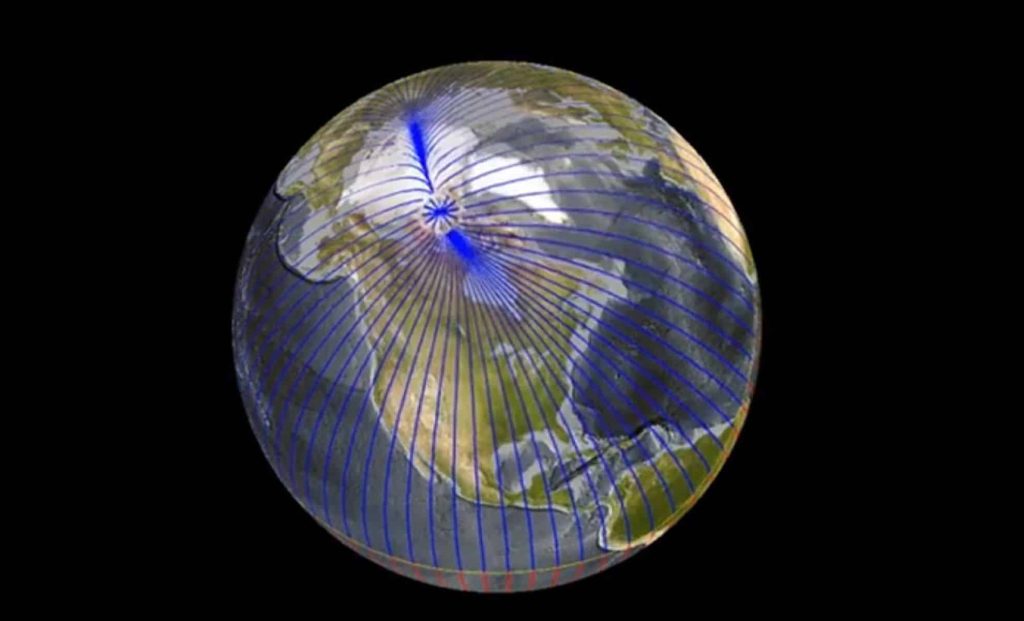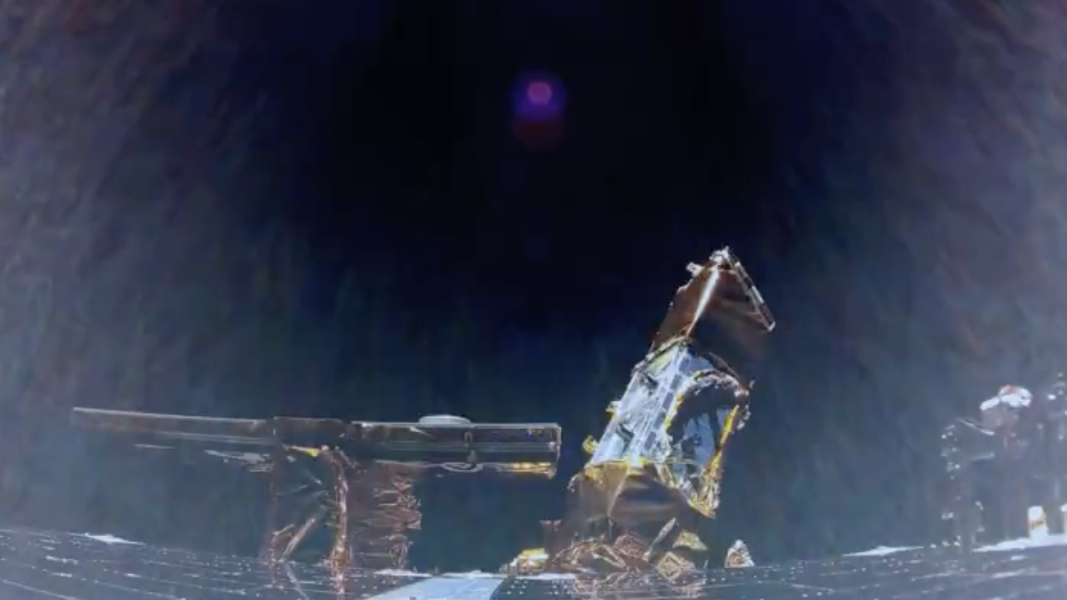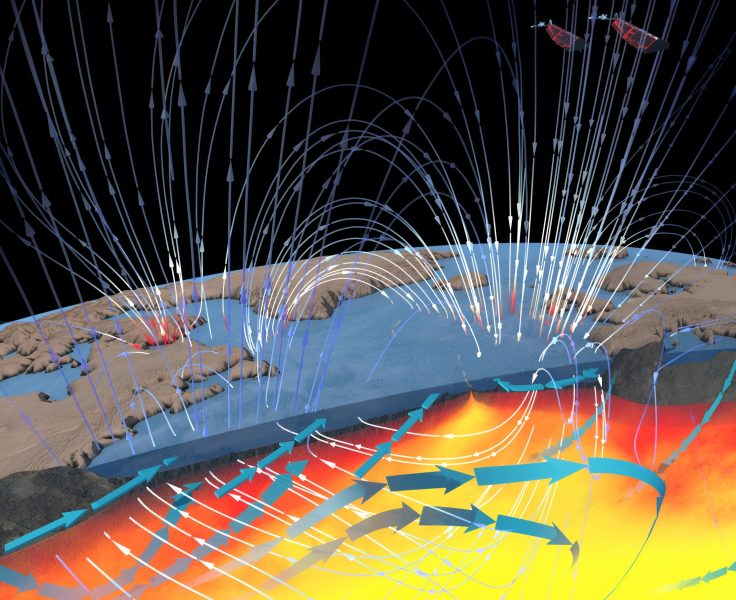Earth’s Magnetic North Pole Is Moving, and Scientists Have Just Released a Critical Update – Indian Defence Review

The magnetic north pole has shifted closer to Siberia, continuing its unpredictable journey across the Arctic. Scientists recently released an updated World Magnetic Model, crucial for navigation systems worldwide, to account for its drift. With implications for GPS accuracy and even the possibility of a pole reversal, what could these changes mean for life and technology on Earth?The magnetic north pole, a critical point for navigation systems worldwide, has shifted closer to Siberia, continuing its unpredictable movement that has puzzled scientists for decades. Unlike the geographic North Pole, which remains fixed, the magnetic north pole is dynamic, driven by the molten metals swirling within Earth’s core. This movement is documented and predicted by the World Magnetic Model (WMM), an essential tool updated every five years to ensure the accuracy of navigation systems.The latest update, released in late 2024, confirms that the magnetic north pole’s drift has slowed after decades of accelerating movement. This unexpected change in speed raises questions about the underlying forces driving its motion and their potential implications for both technology and life on Earth.The magnetic north pole’s location is determined by the magnetosphere, a vast protective field generated by the churning of molten iron and nickel in Earth’s core. This magnetic shield deflects harmful solar radiation and stabilizes Earth’s atmosphere, but its dynamic nature means that the magnetic north pole is constantly shifting.Historically, the pole has moved relatively slowly, averaging just 10 kilometers (6.2 miles) per year over the past 400 years. However, in 1990, its drift accelerated dramatically, reaching speeds of 55 kilometers (34.2 miles) per year. The phenomenon was unprecedented and left scientists scrambling to understand the cause. By 2015, this rapid drift began to slow, stabilizing at 35 kilometers (21.7 miles) per year, where it currently remains.“It has typically moved about 10 km per year or less over the last 400 years,” explained Dr. William Brown, a geophysicist at the British Geological Survey. “It could change its rate or even speed up again. We will continue to monitor the field and to assess the performance of the WMM, but we do not anticipate needing to release a new model before the planned update in 2030.”The pole’s movement has significant implications for global navigation, particularly for systems reliant on magnetic data, such as aviation, shipping, and even everyday smartphone apps.To maintain accuracy in navigation systems, the World Magnetic Model (WMM) is updated every five years. Developed by the British Geological Survey and the National Oceanic and Atmospheric Administration (NOAA), the WMM uses current data on Earth’s magnetic field to predict the future position of the magnetic north pole.“The more you wait to update the model, the larger the error becomes,” said Dr. Arnaud Chulliat, a senior research scientist at NOAA. “The way the model is built, our forecast is mostly an extrapolation given our current knowledge of the Earth’s magnetic field.”The 2025 update introduced two versions of the WMM: a standard model, which offers 3,300-kilometer (2,051-mile) resolution at the equator, and a high-resolution model with 300-kilometer (186-mile) precision. While the latter provides improved accuracy, most commercial devices rely on the standard WMM due to hardware limitations.“Major airlines will upgrade the navigation software across their entire fleets of aircraft to load in the new model, and militaries in NATO will need to upgrade software in a huge number of complex navigation systems across all kinds of equipment,” Brown noted. For the general public, however, these upgrades are less impactful. “Think of it like upgrading your smartphone—you don’t necessarily want to buy a new phone just to upgrade an app to a new version that is more powerful,” he added.The movement of the magnetic north pole is not just an academic curiosity; it has real-world consequences. Navigation systems, particularly those used in aviation and maritime industries, rely on magnetic data to function accurately. If the pole’s position deviates significantly from the model’s predictions, these systems could experience errors, potentially jeopardizing safety.Additionally, the magnetic field’s erratic behavior hints at the possibility of a pole reversal, where the magnetic north and south poles swap places. Such an event, while rare, has occurred multiple times in Earth’s history, with the last major reversal taking place approximately 780,000 years ago. A reversal could take thousands of years to complete and would weaken the magnetosphere, exposing Earth to increased solar radiation.During a reversal, migratory species that rely on the magnetic field, such as whales, sea turtles, and birds, could struggle to navigate. Modern technologies like satellites and power grids would also face heightened risks from solar storms. While life on Earth has survived past reversals, the impact on today’s technology-dependent society could be unprecedented.“It would certainly be an interesting time for engineers to adapt our technology to, but hopefully one they’d have a slow, centuries-long build-up to, rather than any sudden change,” Brown said.Scientists remain committed to monitoring the magnetic north pole and refining the models that predict its movement. While the 2025 WMM update confirmed that previous forecasts were accurate, ongoing research is essential to understanding the underlying processes driving the pole’s drift.With no immediate signs of a polar reversal, the focus remains on improving navigation systems and ensuring that critical infrastructure can adapt to any future changes. The advancements in high-resolution modeling represent a step forward, but the magnetic field’s behavior serves as a reminder of how dynamic and unpredictable our planet can be.From ancient mariners to modern GPS users, humanity has long relied on the magnetic north pole to guide its way. As it continues its journey across the Arctic, the pole remains a symbol of Earth’s ever-changing nature and the ingenuity required to navigate it.Got a reaction? Share your thoughts in the commentsEnjoyed this article? Subscribe to our free Newsletter for engaging stories, exclusive content, and the latest newsComment Save my name, email, and website in this browser for the next time I comment.
© 2024 | Indian Defence Review | All rights reserved
Source: https://indiandefencereview.com/earths-magnetic-north-pole-moving-update/






